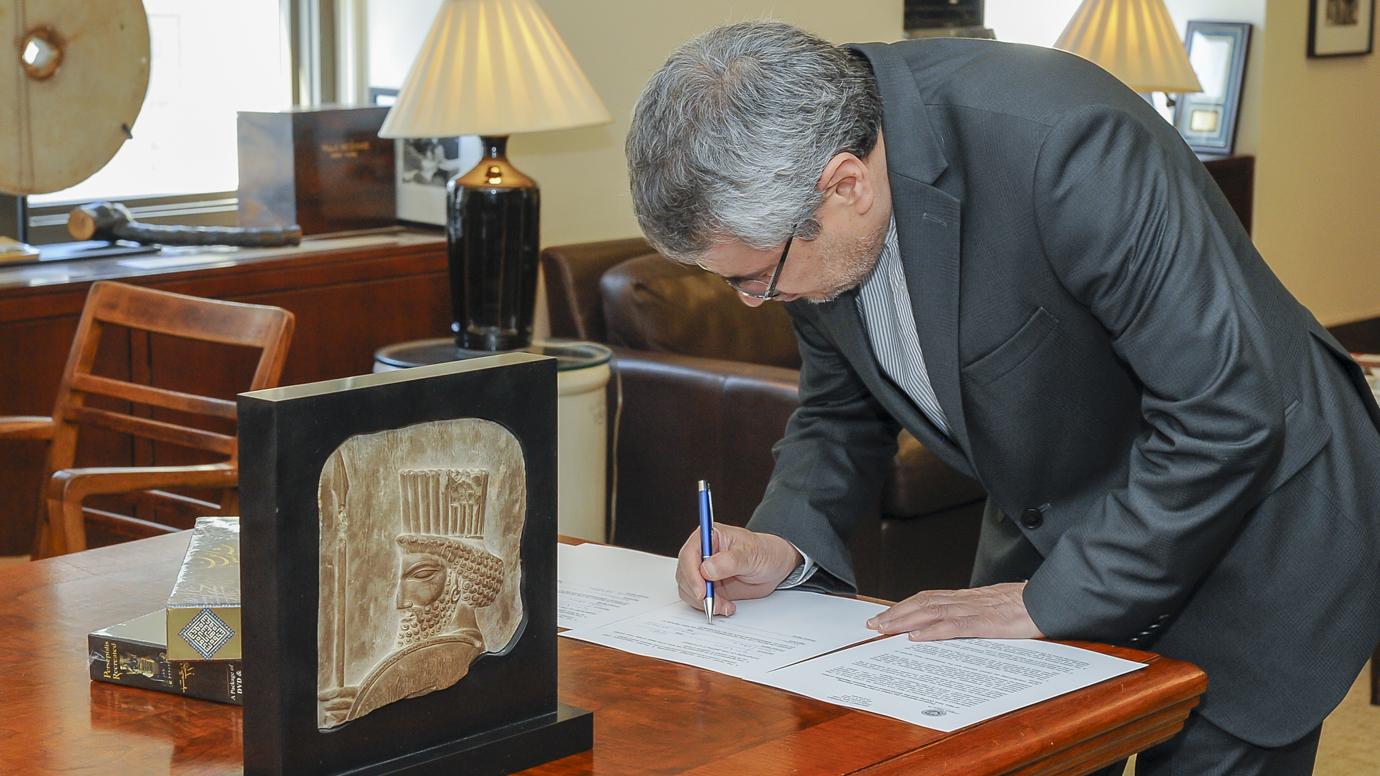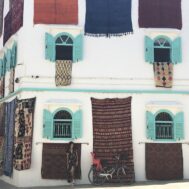On October 27, 2017, shortly before the gala opening of the European Fine Art Fair (TEFAF) at the Park Avenue Armory in New York City, a pair of prosecutors accompanied by three uniformed officers marched in and seized a small limestone relief fragment from the booth of well-known London dealer Rupert Wace. It was to be offered the next day for $1.2 million. The sculpture, which shows the profile head of a bearded Persian soldier, with shield and spear, once formed part of a procession of figures that adorned the magnificent Achaemenid ceremonial complex at Persepolis in southwest Iran, begun by Darius I in 515 BC and plundered by Alexander the Great in 330 BC.
In late July of 2018, a New York Supreme Court judge, persuaded by the arguments of Assistant District Attorney Matthew Bogdanos that the sculpture was stolen from Persepolis and that Rupert Wace and the sculpture’s co-owner, London dealer Sam Fogg, had not tried hard enough to discover its history, ordered the piece returned to the Islamic Republic of Iran.
Why, I wonder, didn’t those eager prosecutors and their posse of cops continue a few miles north and storm the Metropolitan Museum of Art and take possession of their two sculptural fragments from Persepolis? And then, while they were at it, take the expressway south to Baltimore’s Walters Art Museum, which also exhibits a Persepolis fragment, as does Harvard’s Dumbarton Oaks in Washington, DC – along with museums in Cleveland, Minneapolis, and Los Angeles, among others. Like the Wace/Fogg soldier, all of these Persepolis sculptural fragments very likely left Iran more than 80 years ago.
Should the directors and boards of these prestigious museums be in fear, as were Rupert Wace and Sam Fogg, of possible criminal prosecution for possessing stolen property? Perhaps they should. And, of course, there’s the issue of contested title. This is exactly why these museums should welcome long dormant, “sleeper” claims for their Persepolis pieces: to clear the air. What must now be tested in court – as it was not in the uncontested New York judicial proceeding – are at least three issues critical for all museums, collectors, and dealers involved with antiquities.
- Did the 1930 Iranian National Protection Act in fact legally vest ownership of Persepolis and its sculpture in the State? And even if it did, was that law promulgated and generally known, and was it uniformly enforced domestically in Iran as well as internationally? Or as Charles Wilkinson, who excavated in Iran with the Met during the later ’30s, lamented in the introduction to his book on Nishapur pottery, did the 1930 law, with its clause allowing for commercial excavation so long as part of the finds were turned over to the antiquities service, in effect legitimize treasure hunting or even what we might now think of as looting?
- On the other side of the legal ledger: What is an appropriate standard to be applied to the due diligence on the part of the American museum buyers conducted long ago as it can be reconstructed decades after the Persepolis acquisitions? Certainly, it would be unfair to apply the rigorous standards of today to the distant past.
- And even more important: Has Iran, for having sat on its right to pursue repatriation for decades, as these Persepolis pieces were publicly exhibited and widely published, lost the right to have Bogdanos seize the piece on its behalf? Such long delay on the part of the claimant makes it all but impossible for the museums now possessing Persepolis sculptures to defend themselves by proving, for example, that their pieces left Iran before September 1931, when Persepolis was added to the National Protection Heritage list.
What we need now, I believe, are at least a few “sleeper” claims, in order judicially to put to rest the question of title to these scores of pieces of the Persepolis sculptural diaspora. I, for one, am confident of the outcome: Little known and selectively enforced foreign laws from decades past should not and will not provide the basis for antiquities seizures and prosecutions in US courts.
Dr. Gary Vikan, of Baltimore Maryland, is President of the Committee for Cultural Policy, Inc.
 Signing at the turnover of the Persepolis fragment to Iranian authorities on September 4, 2018. Credit Office of the NY District Attorney.
Signing at the turnover of the Persepolis fragment to Iranian authorities on September 4, 2018. Credit Office of the NY District Attorney. 

